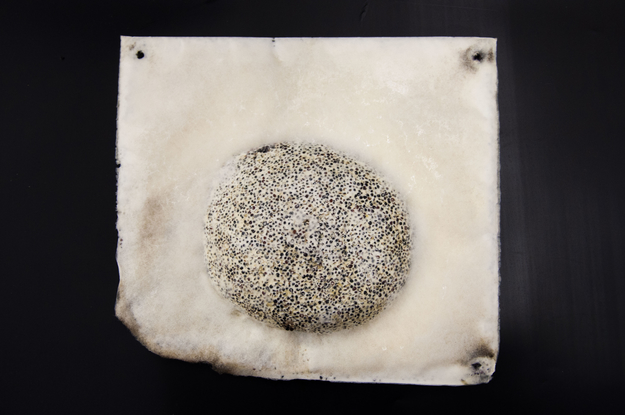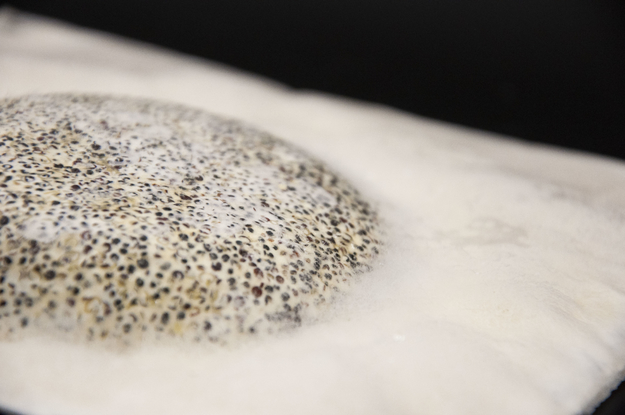Self-connecting test a sheet and a bowl tearing up connecting part -
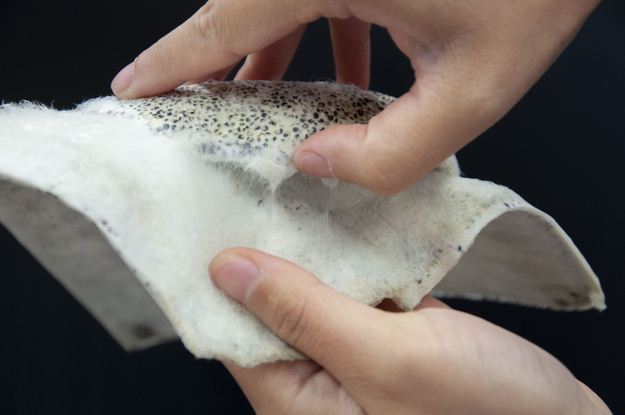
As lab interns, we already get used to eating our lab-grown moulds. Now let's step away from our perspective: how many of you are afraid of eating fungus, even knowing that a large part of our everyday food is made with a fungus-fermentation process?
Working in the Clean Lab, making experimental fermented food with Rhyzopus Oryzae fungus, we sometimes got visits from other colleagues. When they looked at our fresh grown mycelium with a stunned look, we got comments like: "Wait, it looks like mould!" Curiously, the cooked moulds grown on different beans, wheats and other seeds that our colleagues tasted and gave us feedbacks on are just these "unfamiliar" moulds.
We see that, in front of an inviting looking food, people are not so into getting to know what exactly it is. In our life, we loose this feeling of knowing the food from itself. We rely on the expiration dates on food packages, even when the food in our fridge is still okay to eat. Because of a fear of moulded food, we stop inquiring by ourselves on what moulds are and how to live with them.
Since we are designing edible tableware out of edible mycelium (the root part of a fungus), we came to a design concept that, what if our design let people learn about what mycelium is through an interactive process? Eating a delicious tableware is only one part; getting to know what it does in nature world is another important part.
A very interesting aspect of mycelium in our experience, is that it connects things that it absorbs nutrients from. Under the forest ground, it connects plants on the ground and transfer nutrients and information amongst each other. It binds together the loose stuff of whatever it feeds on. A natural glue, is a vivid comparison.
We want people to see the threads and break down this connection as a necessary step towards having their food. We imagined a piece of mycelium sheet on the table, and different containers that invites people to eat with are sleeping on this sheet. People should take the containers apart from the sheets and eat the food inside.
What helps us ground this idea is our test of second-incubation to connect two pieces of mycelium material growing together again. An already mature bowl was simply placed on top of a mature sheet. For another 24 hours, they successfully connected with new threads from the fungus.
If you think this type of mycelium is acceptable, be prepared for the next images because other than connecting two mycelium objects we also try to fold a sheet with cutting line and let it connect itself. And the results are beautiful to our lab interns' eyes, while maybe stunning to other viewers.
Self-connecting test with the small container from a sheet -
Self-connecting test with the small container from a sheet the new filaments -
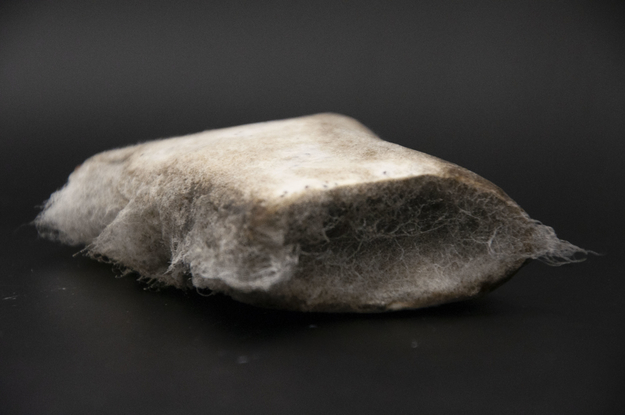
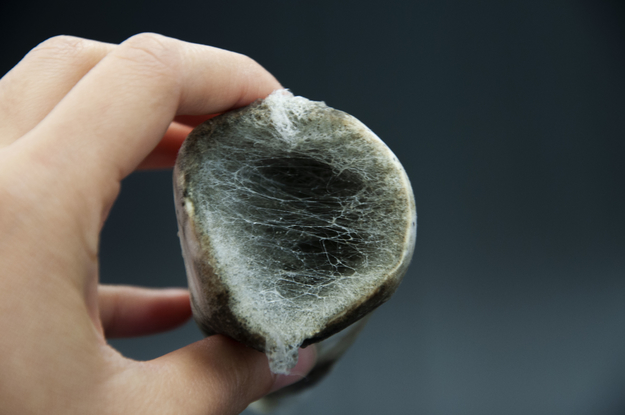
Now, the question is, would you really want to eat this, even though you know and we promise you it's completely edible, which is proved by hundreds of papers of research and years of practice in Indonesia? We know that you are hesitating and we think that's why our design of this interactive tableware makes sense, as long as it challenges your knowledge of what's edible and what's there in the microbiology world.
Okay, let us tell you about our further ambition: what if the food these tablewares contain are also invaded by the same fungus, and you have to grab the food from the fungus? We hope through this interaction process, people get meaningful learning experience in our restaurant and curiosity about eating fungus, mycelium and moulds.
